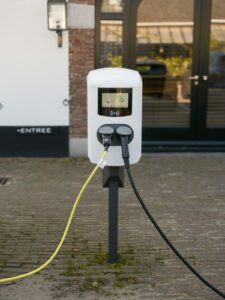
Home / EV Charging News / Grid Integration: Managing the Increased Demand for Electricity from Electric Cars
As the world shifts towards electric vehicles (EVs) to reduce carbon emissions, one of the biggest challenges that arises is managing the increased demand for electricity. Charging EVs requires a significant amount of energy, and as more and more people switch to EVs, the demand for electricity will only increase. This presents a challenge for power grid operators who need to balance the supply and demand of electricity to ensure the grid remains stable. In this article, we will explore the challenges of grid integration in the context of electric cars and what solutions are being developed to manage this increased demand for electricity.
Governments play an important role in managing the increased demand for electricity from electric cars. They can provide incentives to encourage EV owners to charge their cars during off-peak hours, such as lower electricity rates. Governments can also invest in infrastructure upgrades and new technology to support grid integration. This requires collaboration between the government, power grid operators, and EV manufacturers to ensure a smooth transition to electric cars.
Grid integration is a rapidly evolving field with many new solutions being developed to manage the increased demand for electricity. One of the most promising solutions is the use of advanced grid management systems that can monitor and control the grid in real-time. These systems use data analytics and machine learning to predict demand patterns and adjust supply accordingly, helping to maintain grid stability.
Another potential solution is the use of wireless charging technology. Wireless charging eliminates the need for physical charging cables and can be integrated into the road infrastructure. This would allow EVs to charge as they drive, reducing the need for stationary charging stations and helping to manage the increased demand for electricity.
Grid integration is a critical challenge that must be addressed as the world shifts towards electric cars. While there are challenges to managing the increased demand for electricity, there are also many solutions being developed to address these challenges. Governments, power grid operators, and EV manufacturers must work together to ensure a smooth transition to electric cars that is sustainable and reliable. With continued investment in infrastructure and new technology, we can ensure that electric cars play a key role in reducing carbon emissions and creating a more sustainable future.
$2,890.00 Original price was: $2,890.00.$2,790.00Current price is: $2,790.00.
$3,950.00 Original price was: $3,950.00.$3,450.00Current price is: $3,450.00.
$1,650.00 Original price was: $1,650.00.$1,590.00Current price is: $1,590.00.
$2,290.00 Original price was: $2,290.00.$2,150.00Current price is: $2,150.00.
$1,290.00 Original price was: $1,290.00.$799.00Current price is: $799.00.

Your Power Management Partner for Over 25 Years Future Generations Depend on Our Decisions Today ™
2024 © All rights reserved by CyberSwitching